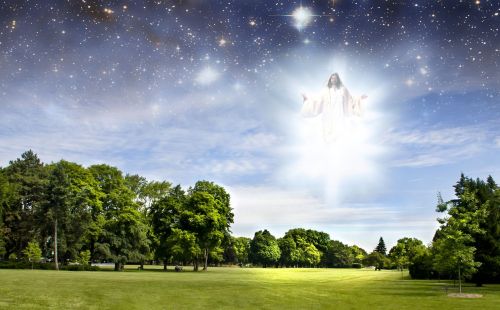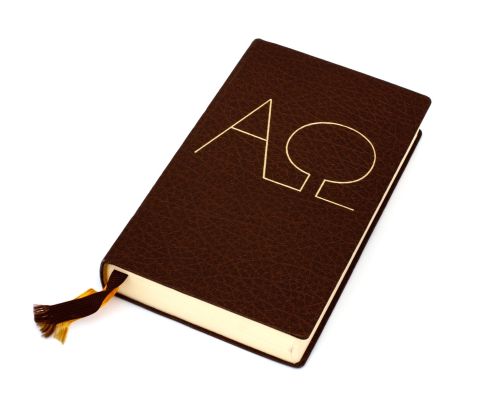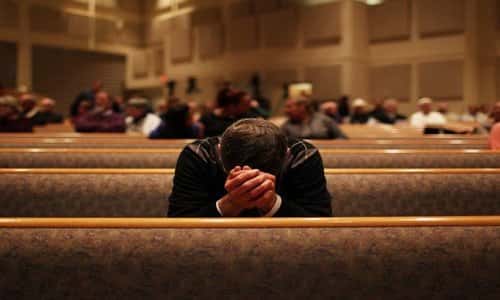
In the beginning was the Word, and the Word was with God, and the Word was God. (John 1:1)
Like the other Gospel writers, John purposed to present Jesus from a unique perspective with the goal “that ye might believe that Jesus is the Christ, the Son of God; and that believing ye might have life through his name” (John 20:31). Matthew presented Jesus as the promised King of the Jews. Mark presented Jesus as the suffering Servant. Luke emphasized the perfect humanity of the Son of Man, but John stressed the divinity of Christ as evidenced by his opening sentence: “the Logos was God.” “And the Logos was made flesh, and dwelt among us” (John 1:14).
To solidify his point, John employs a trinity of sevens that demonstrate the divinity of Christ: (1) seven “I Am” statements, (2) seven miraculous signs, and (3) seven truth-revealing discourses. In the next few weeks, I plan to look at the 21 affirmations individually beginning with the seven “I Am” statements.
“I am” in the Greek is ego eime. At face value, the phrase seems rather innocuous. We use it a couple of hundred times a day without giving it a second thought, but in the Gospel of John, the phrase takes on greater significance. As employed by John, it harkens back to Moses’ first encounter with Yahweh at the burning bush (Exodus 3). “And Moses said unto God, Behold, when I come unto the children of Israel, and shall say unto them, The God of your fathers hath sent me unto you; and they shall say to me, What is his name? what shall I say unto them? And God said unto Moses, I AM THAT I AM: and he said, Thus shalt thou say unto the children of Israel, I AM hath sent me unto you” (Exodus 3:13-14, emphasis mine). “I AM” is one word in the Hebrew, hâyâh, and it means simply “to exist.” Similarly, the Greek eime means “I exist” or “I am.” We can tie the two together looking at how the Septuagint (LXX, the Greek translation of the Hebrew text) renders the Hebrew hâyâh in Exodus 3:14. Not surprisingly, we find that the LXX translates hâyâh as ego eime. God identifies Himself as “the self-existing One.”
Some of the strongest “I Am” affirmations by Jesus are not included in the list of seven I Am statements. For example, in a discussion with the Pharisees, “Jesus said unto them, Verily, verily, I say unto you, Before Abraham was, I am” (John 8:58, emphasis mine). The Pharisees understood precisely what Jesus said, “Then took they up stones to cast at him” (John 8:59) because, as far as they were concerned, Jesus spoke blasphemy by applying the name of God to Himself. In another discussion with the Pharisees, Jesus plainly stated, “I and my Father are one” (John 10:30). “Then the Jews took up stones again to stone him” (v. 31). In His final conversation with His disciples the night before the cross, “Philip saith unto him, Lord, shew us the Father, and it sufficeth us” (John 14:8). Jesus’ reply was clear, “he that hath seen me hath seen the Father” (v. 9). After seeing the risen Lord, “Thomas answered and said unto him, My Lord and my God” (John 20:28, emphasis mine), and Jesus approved the attribution without correction. With that, we will examine the first of the seven “I Am” statements.
In the first of the “I Am” statements recorded by John, “Jesus said unto them, I am the bread of life: he that cometh to me shall never hunger; and he that believeth on me shall never thirst” (John 6:35, emphasis mine). Bread is a staple food meaning that it “is eaten routinely and in such quantities that it constitutes a dominant portion of a standard diet in a given people, supplying a large fraction of the needs for energy-rich materials and generally a significant proportion of the intake of other nutrients as well.”[1] Bread is one of the oldest prepared foods; it has been around since the beginning of time. “Bread is known as an ample source for the grains category of nutrition … [and] is considered a good source of carbohydrates through the whole grains, nutrients such as magnesium, iron, selenium, B vitamins, and dietary fiber … bread is often used as a synecdoche for food in general in some languages and dialects.”[2] Indeed, along with water, bread is sufficient to sustain life. Many a prisoner has been kept alive on a diet of bread and water. “Obadiah took an hundred prophets, and hid them by fifty in a cave, and fed them with bread and water” (1 Kings 18:4). Bread is food. Bread sustains life. It provides nourishment and gives strength. How is Jesus bread?
The day before making this statement, Jesus fed 5000 men (not counting women and children) by multiplying five barley loaves and two fish (John 6:1-14). Now they came looking for more. “Jesus answered them and said, Verily, verily, I say unto you, Ye seek me, not because ye saw the miracles, but because ye did eat of the loaves, and were filled” (John 6:26, emphasis mine). Apparently the miracles they witnessed, including the feeding of a multitude from one boy’s lunch made little impression on this crowd, and they were hungry for more. Jesus advised, “Labour not for the meat which perisheth, but for that meat which endureth unto everlasting life, which the Son of man shall give unto you: for him hath God the Father sealed” (John 6:27, emphasis mine). “Meat” could also be translated as “bread,” or “food.” Jesus presented an interesting option. Even with preservatives, food has a limited shelf life. Once consumed, it burns up quickly in our body, and we are soon hungry again. Jesus offered nourishment that would endure forever.
What a great option! Never to experience hunger again! Sign us up, Jesus! “Then said they unto him, What shall we do, that we might work the works of God?” (John 6:28) The “work,” Jesus said, is “that ye believe on him whom [God] hath sent” (John 6:29).
“They said therefore unto him, What sign shewest thou then, that we may see, and believe thee? what dost thou work? Our fathers did eat manna in the desert; as it is written, He gave them bread from heaven to eat” (John 6:30-31, emphasis mine). Less than 24 hours had elapsed since Jesus fed them, and they wanted to see a sign – “bread from heaven.” They forgot, or overlooked, the fact that “their fathers” quickly tired of the heavenly bread God provided in the desert (Numbers 11:4-6). Not even that bread promised to satisfy their real need.
Their real need and our real need is not physical, but spiritual. “For the bread of God is he [Jesus] which cometh down from heaven, and giveth life unto the world … I am the bread of life: he that cometh to me shall never hunger; and he that believeth on me shall never thirst.” (John 6:33, 35, emphasis mine). One must consume food – bread – in order to receive any benefit from it. One must take it in internally otherwise it is of no use. Jesus gave a graphic illustration of this fact. “I am the living bread which came down from heaven: if any man eat of this bread, he shall live for ever: and the bread that I will give is my flesh, which I will give for the life of the world” (John 6:51, emphasis mine).
When we ingest bread, it becomes a part of us. When we take in Jesus, He becomes part of us, only the effect is eternal. “Whoso eateth my flesh, and drinketh my blood, hath eternal life; and I will raise him up at the last day … He that eateth my flesh, and drinketh my blood, dwelleth in me, and I in him” (John 6:54, 56).
The great I AM is the Bread that gives eternal Life.




